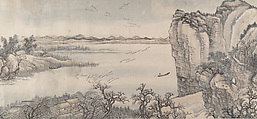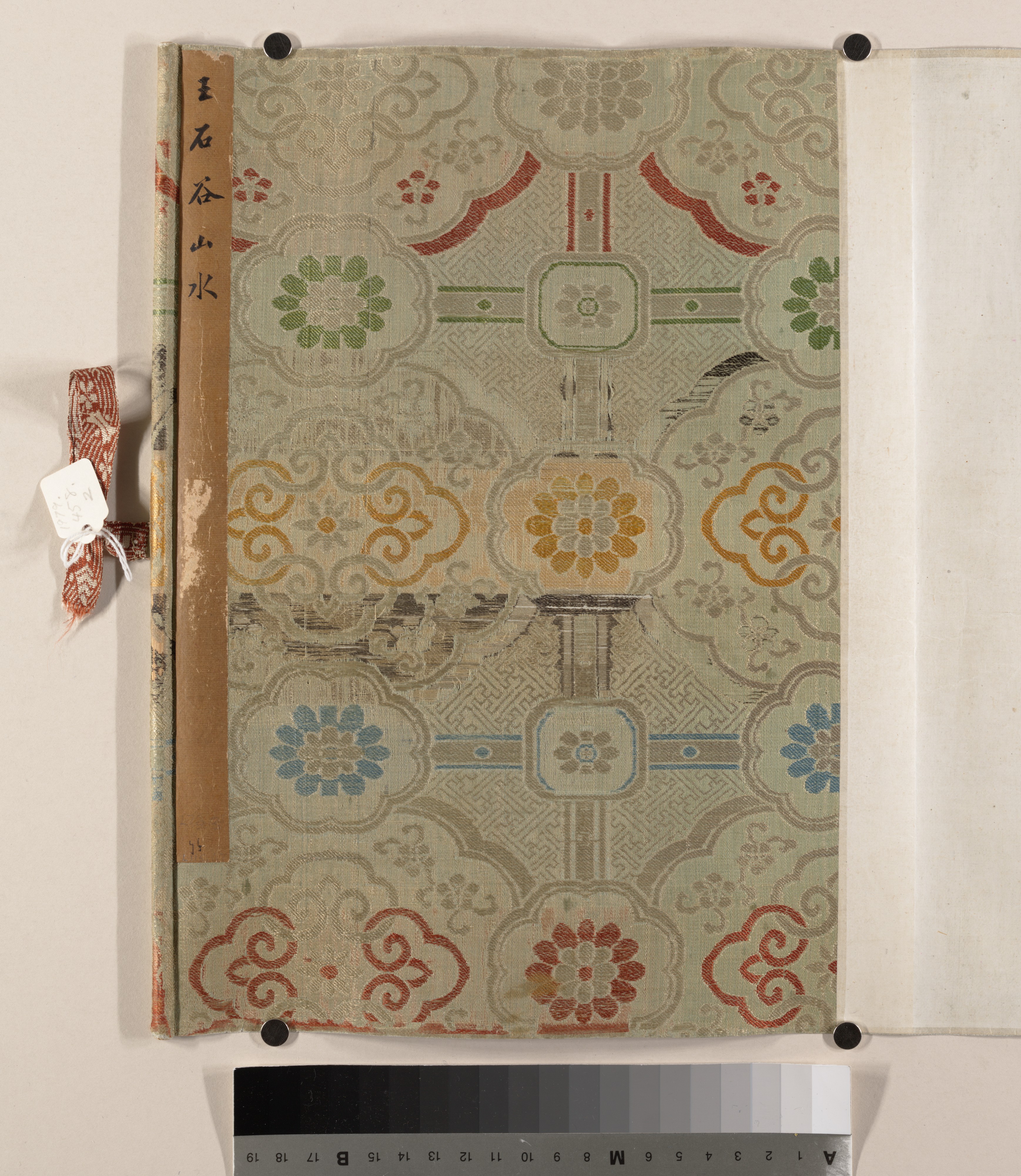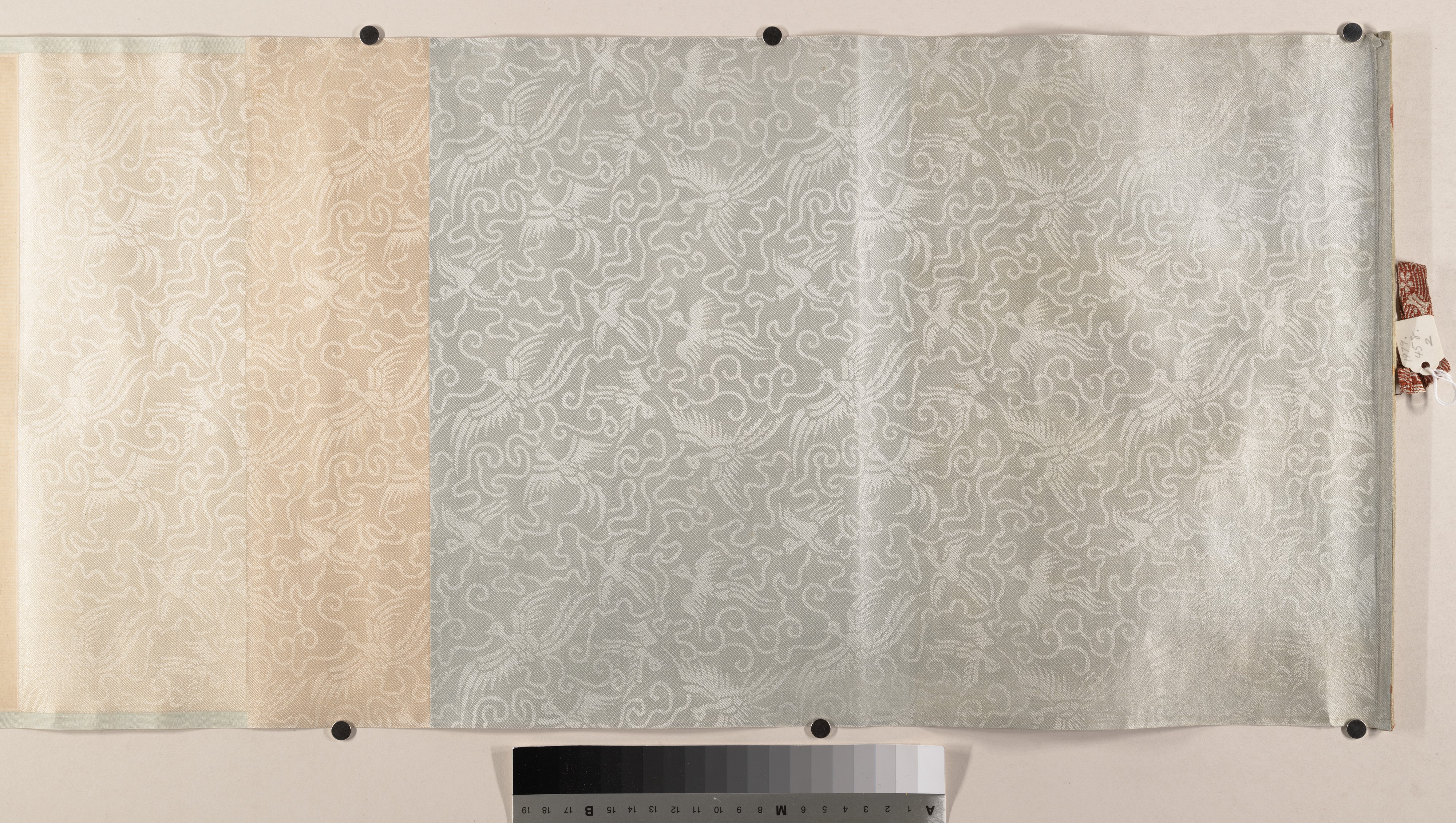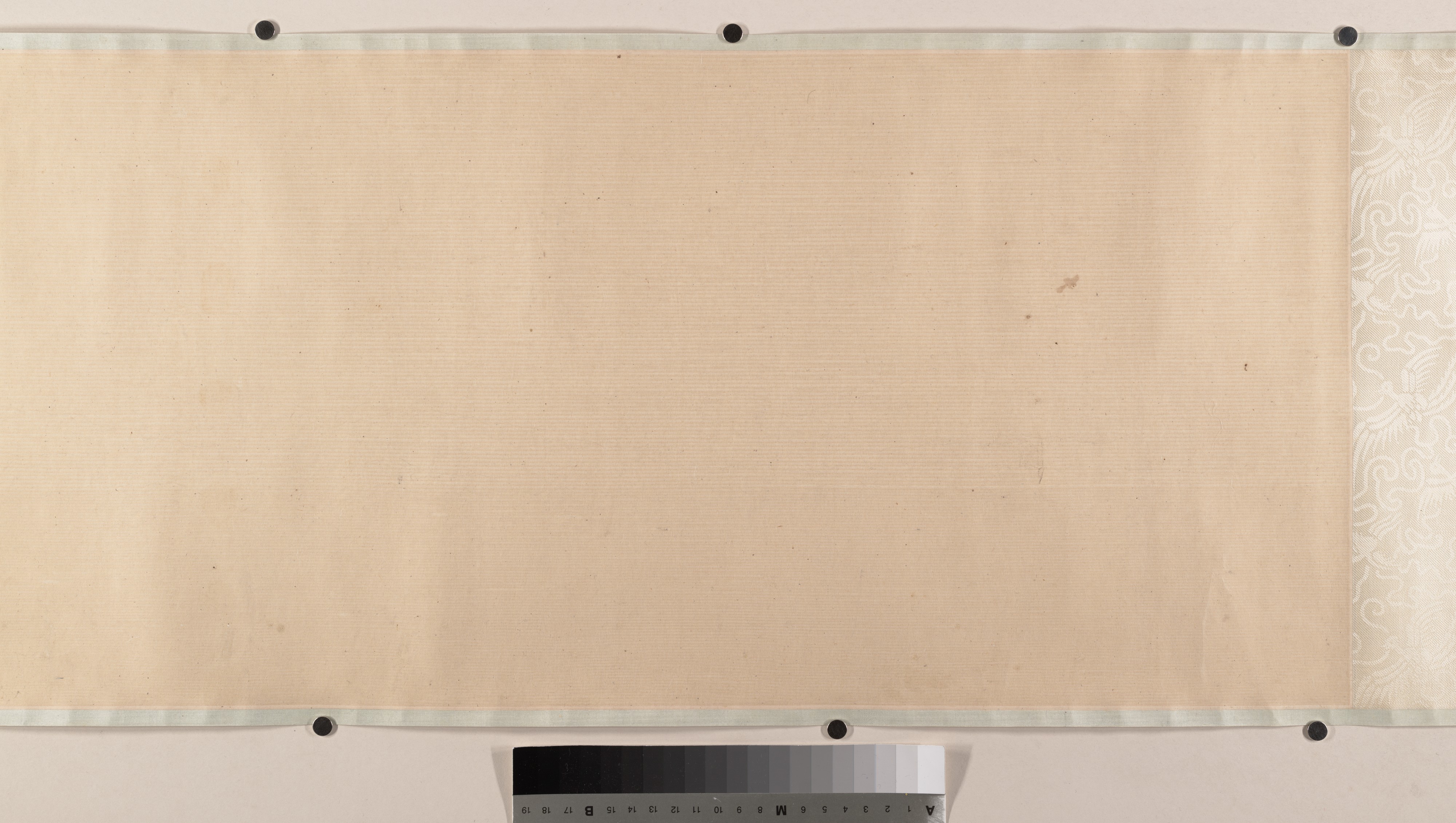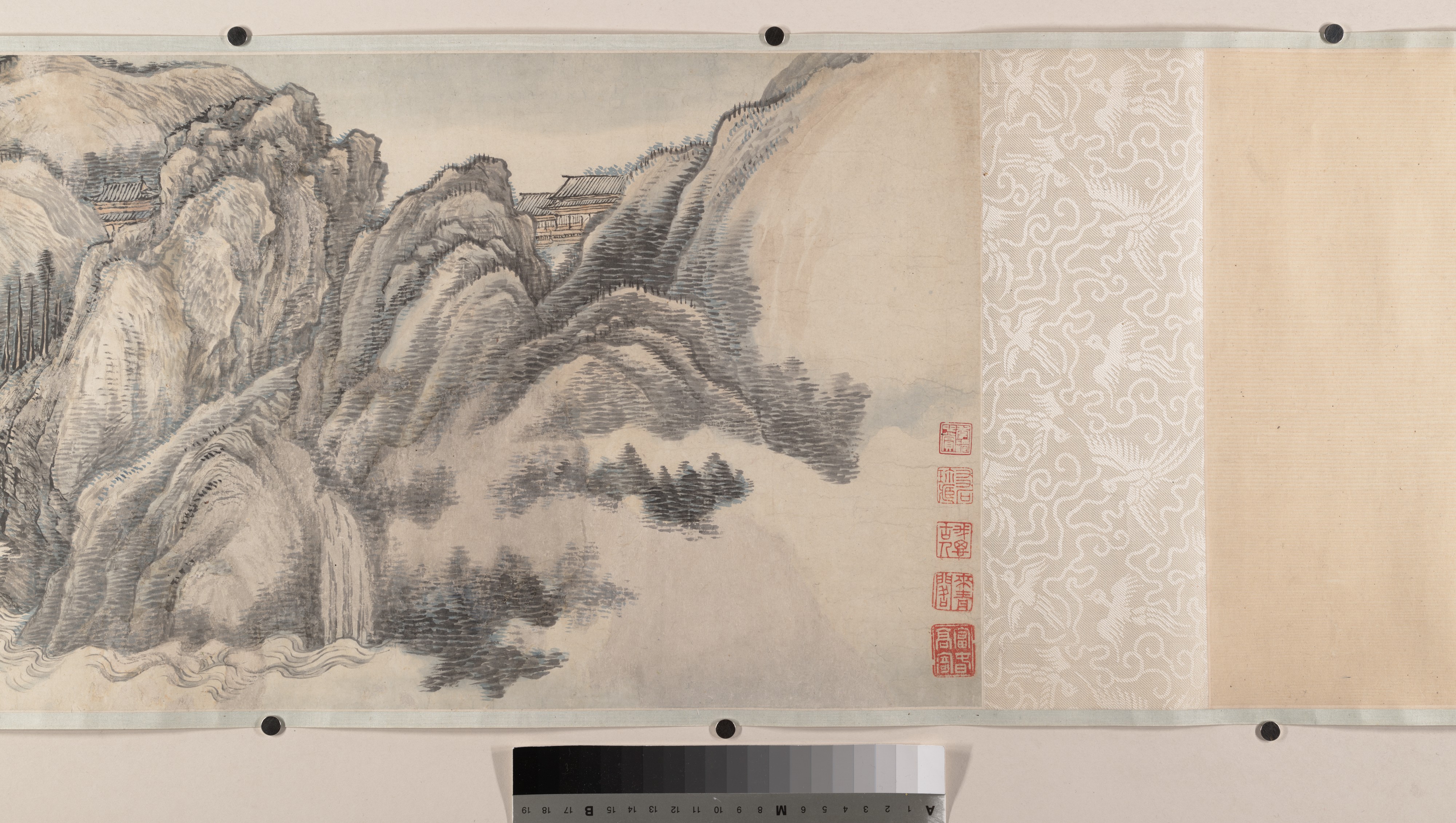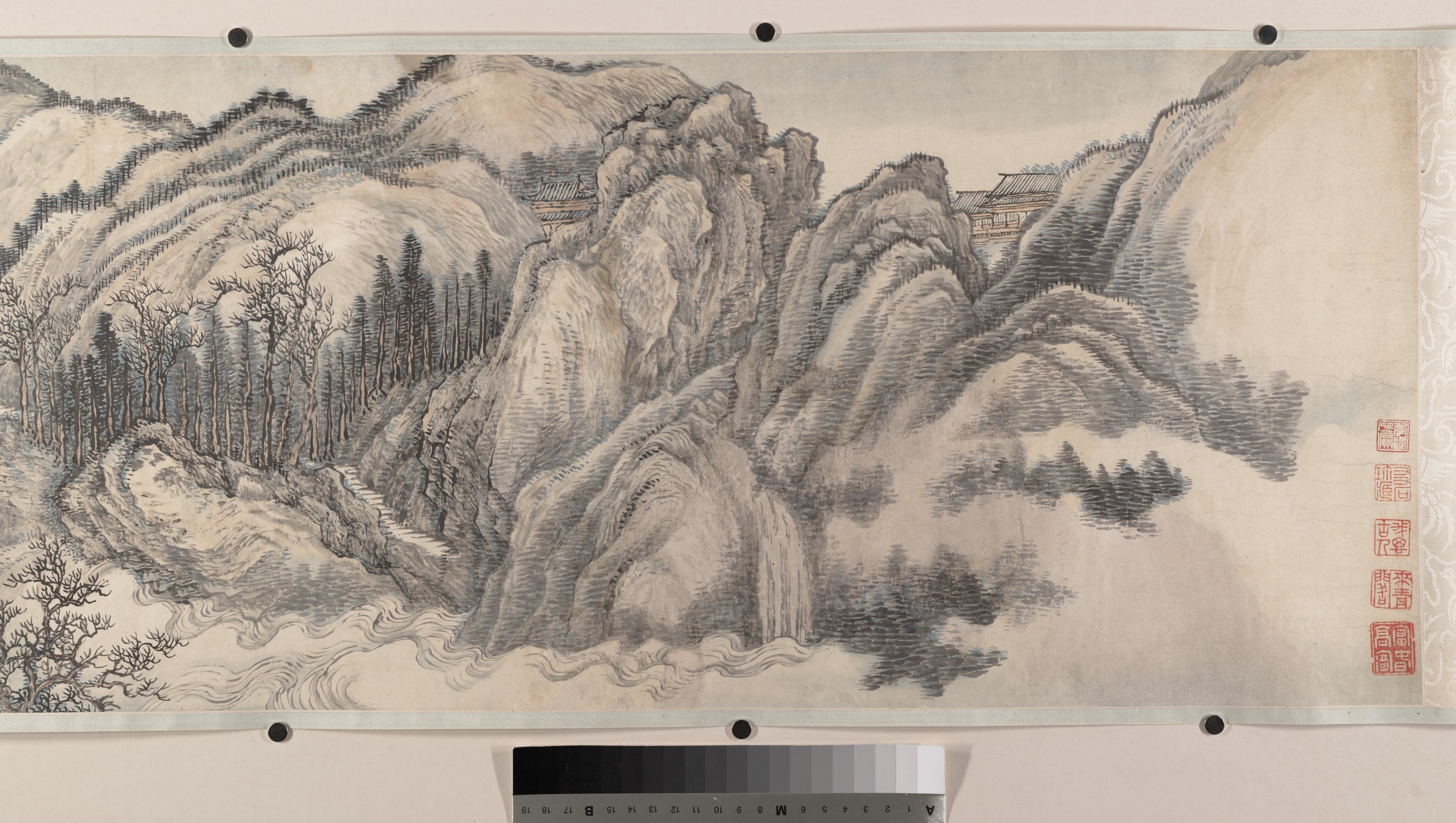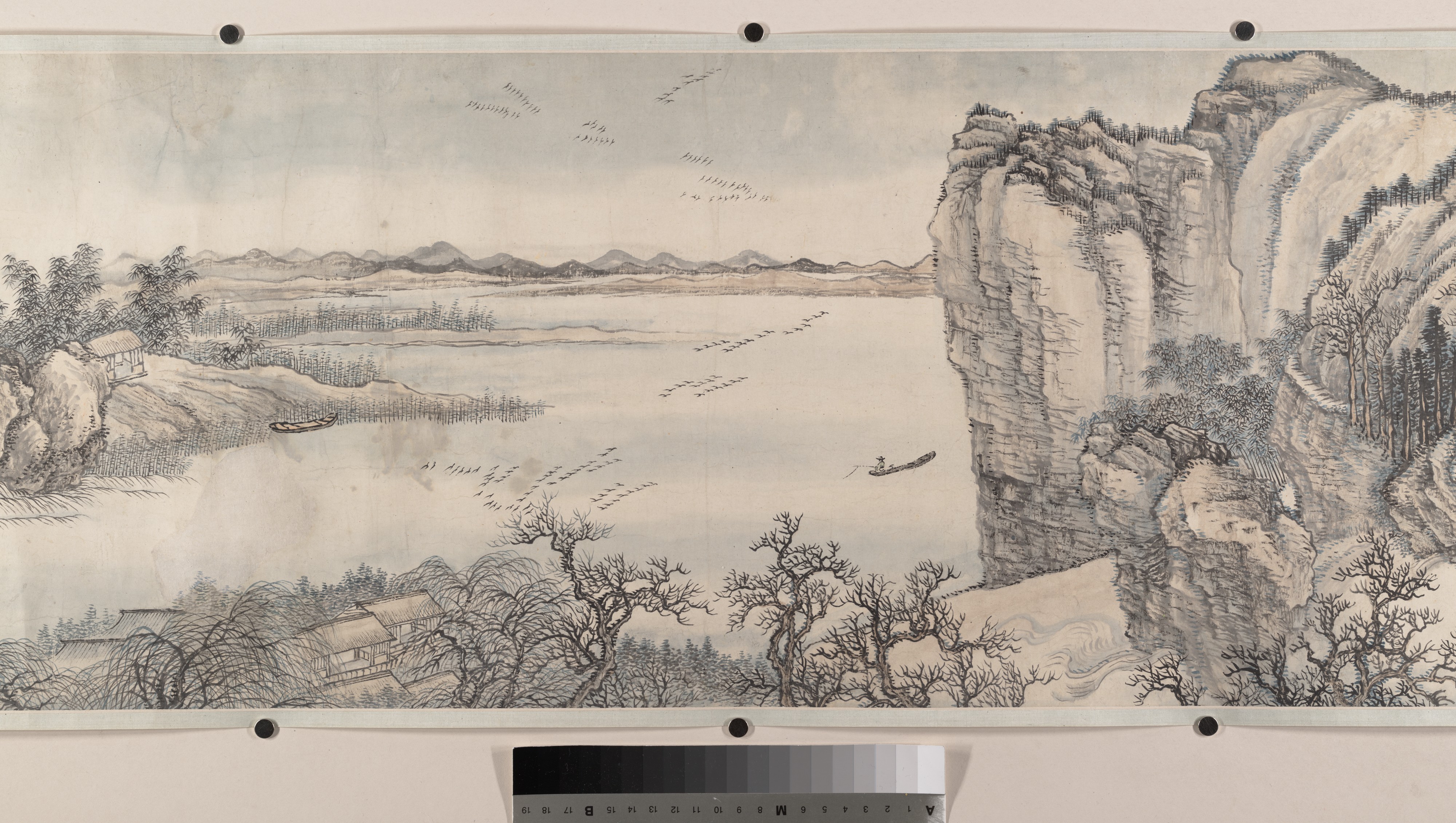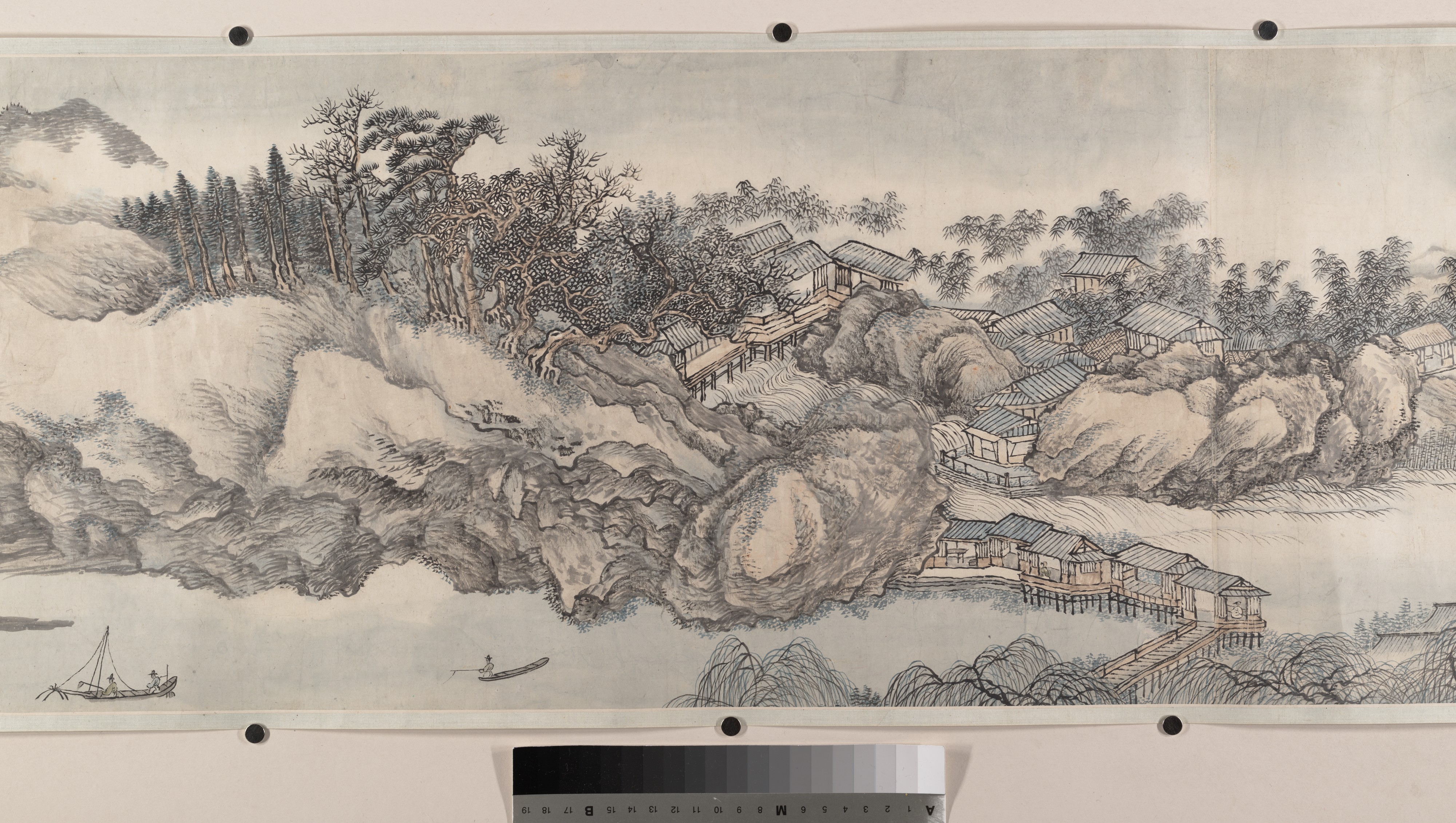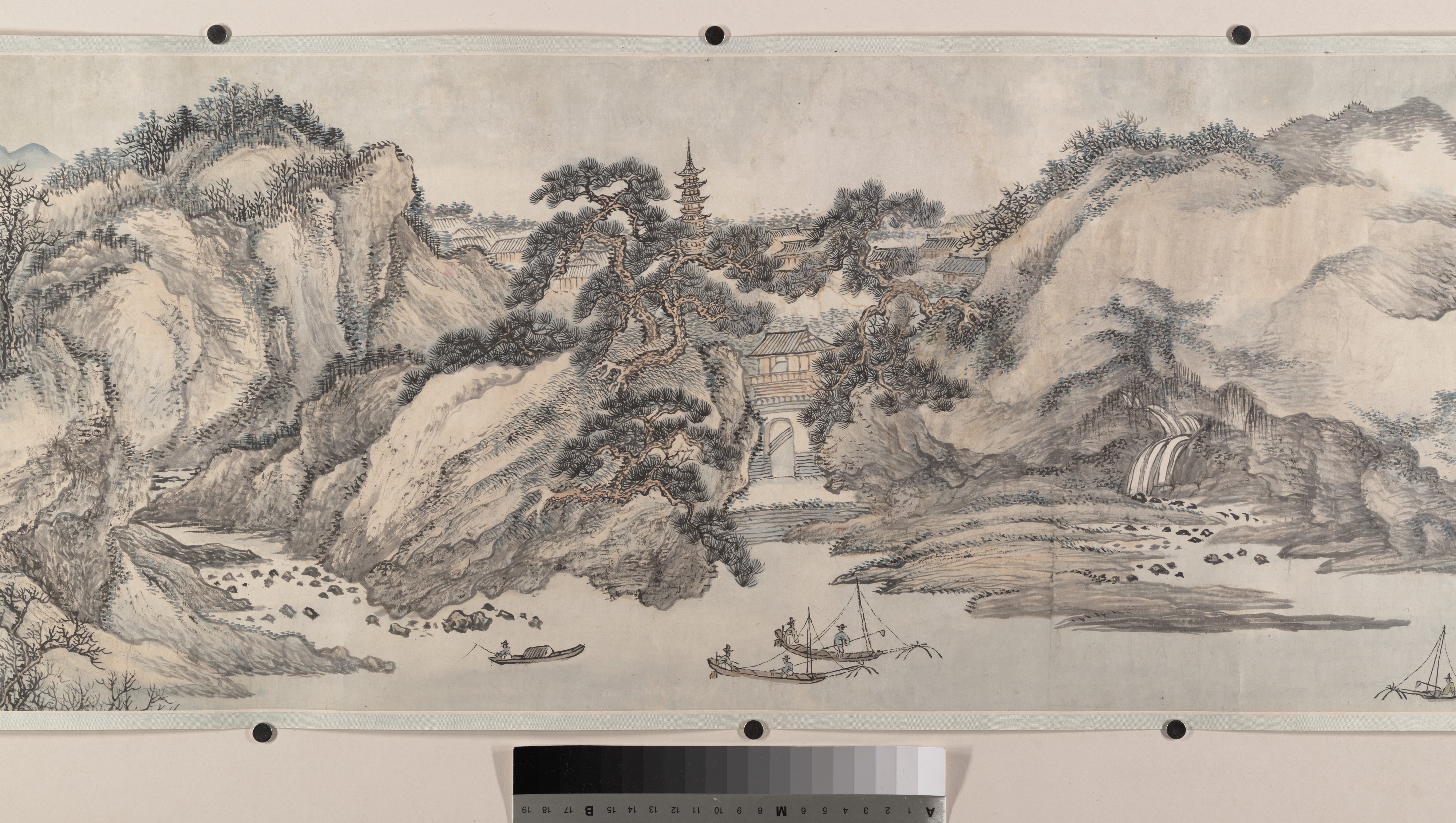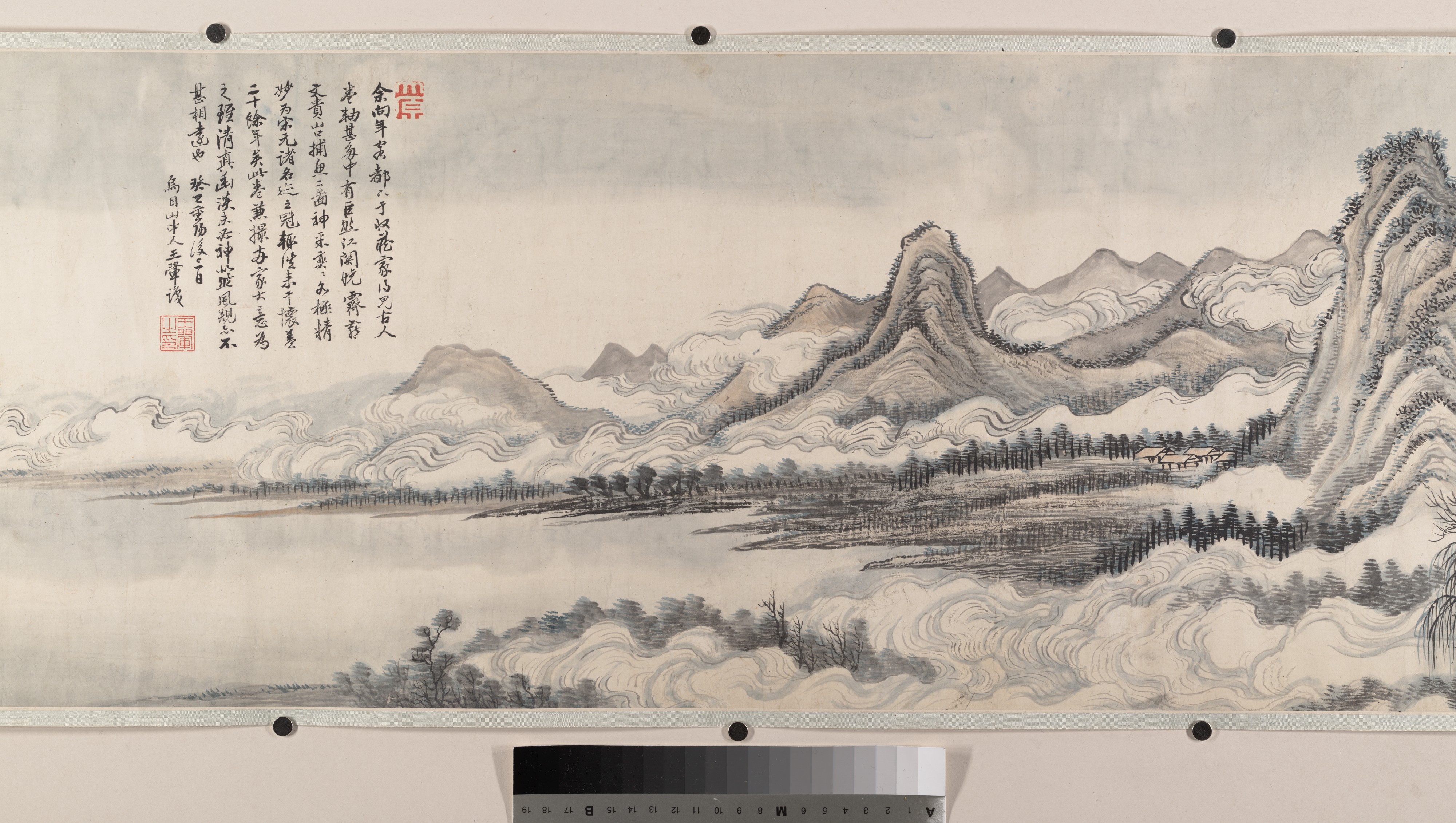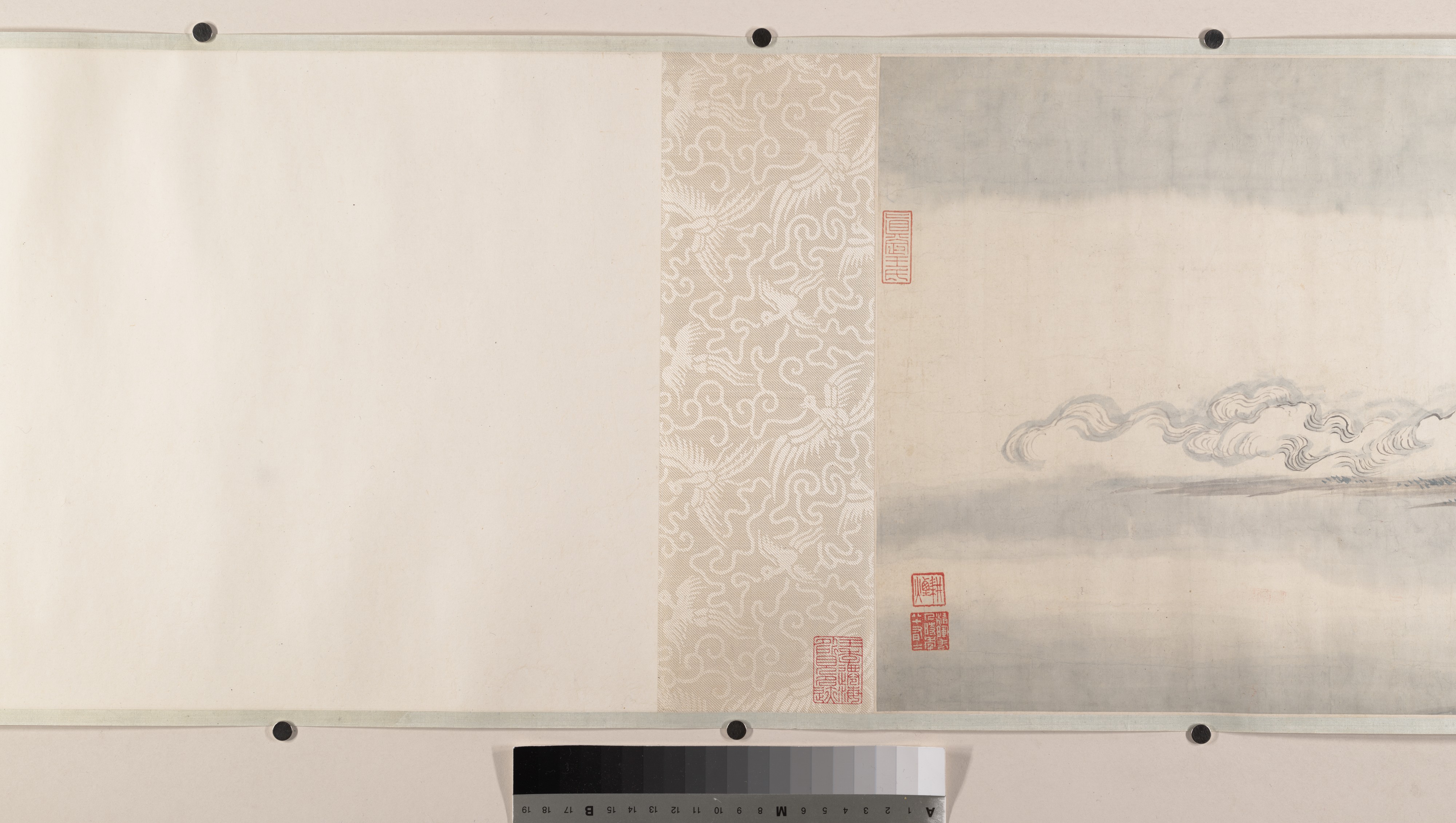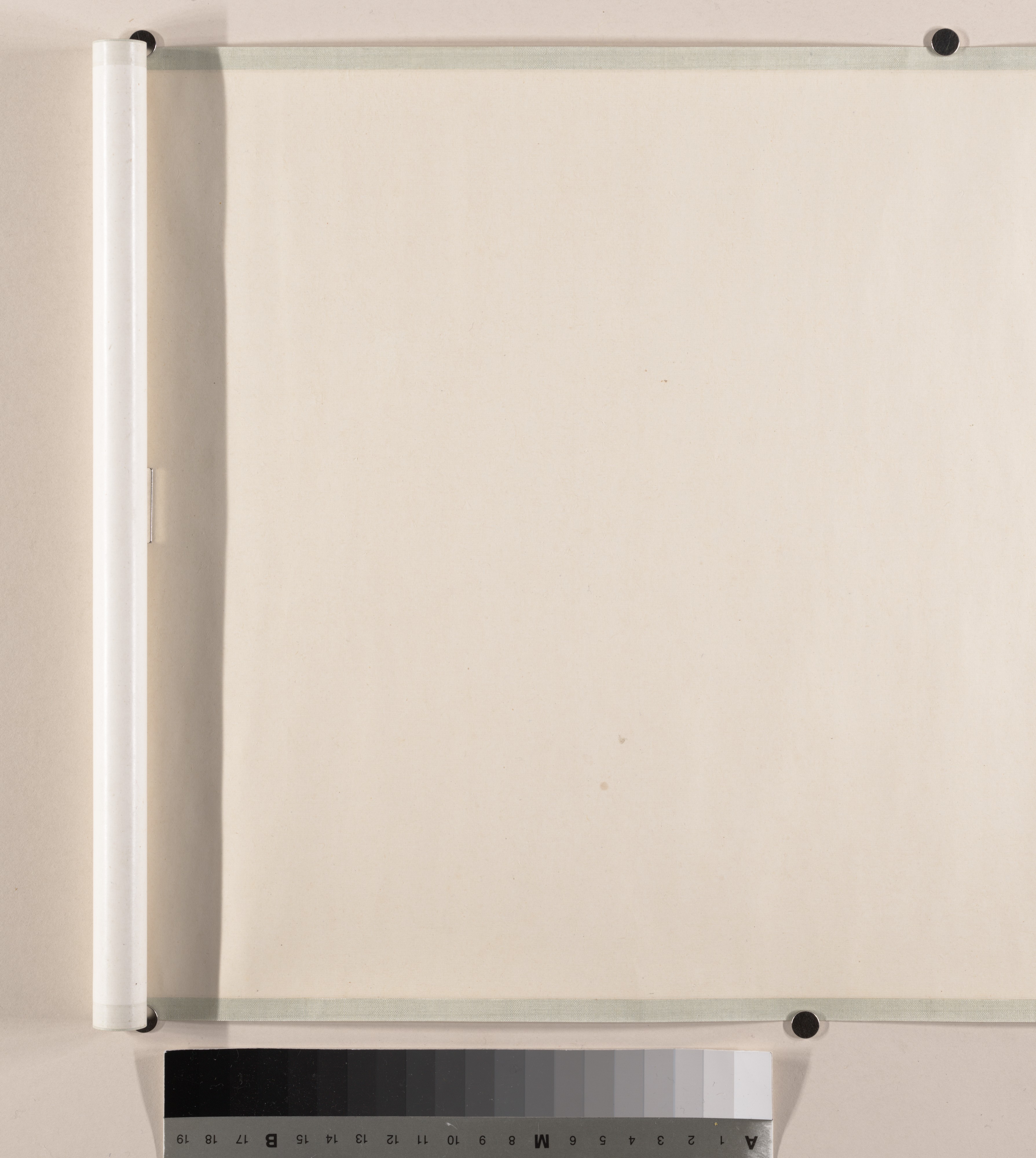Landscape in the Style of Juran and Yan Wengui
Wang Hui Chinese
Not on view
At the age of eighty, Wang Hui continued to find inspiration for his paintings in the styles of the ancients. On an album leaf in the National Palace Museum, Taipei, dated 1713, he wrote that his sixty years of studying and emulating old masters had passed like a single day. In autumn of the same year, he painted this handscroll, which combines the disparate styles of Juran (act. ca. 960–95), evoked with long, soft brush lines that give texture and contour to the hillsides, and of Yan Wengui (act. ca. 970–1030), suggested by finely textured surfaces executed in crisp short strokes and dots. The inscription describes Wang Hui's inspiration:
Some years ago I was a guest in the capital, where, at the home of a collector, I was able to see a great many scrolls by ancient men. Among them were two paintings: Juran's River Pass on a Clear Morning and Yan Wengui's Fishing near a Mountain Pass. Their divine color was magnificent and each was extremely refined and marvelous, among the best of all the famous works of the Song and Yuan. Suddenly, after more than twenty years, they have come to my breast. This scroll was made by combining the two masters' general concepts. Although in purity, truth, and subtle blandness it is not close to them, in its style it is not very far.
Due to rights restrictions, this image cannot be enlarged, viewed at full screen, or downloaded.
This artwork is meant to be viewed from right to left. Scroll left to view more.
